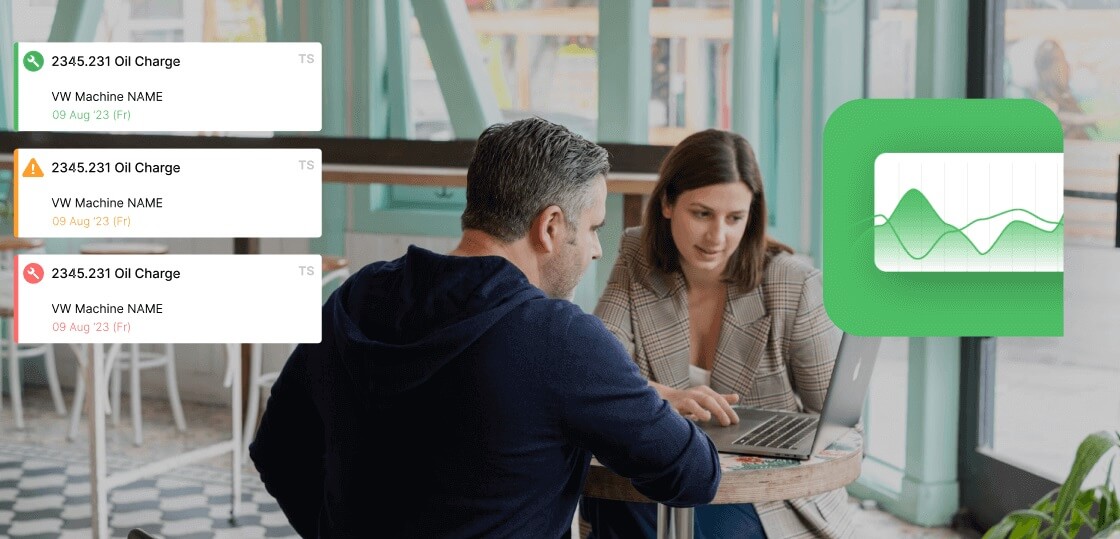Fabrico CMMS takes the top spot because it perfectly balances a comprehensive, powerful feature set with an incredibly simple and intuitive user interface.
It’s designed from the ground up to solve the real-world problems that maintenance teams in manufacturing and industrial settings face every day.
Fabrico gives you a complete, all-in-one platform to manage every aspect of your equipment maintenance without the frustrating complexity of older, traditional systems.
Noteworthy Features:
-
Intuitive Work Order Management: Creating, assigning, and tracking work orders is effortless. The visual drag-and-drop scheduler lets you see your team’s workload at a glance and adjust priorities instantly.
-
Complete Asset Hub: Fabrico creates a digital twin for every piece of your equipment. You can store manuals, schematics, safety procedures, and QR codes, and see a full, time-stamped history of every repair and PM ever performed.
-
Integrated Inventory Control: This feature connects your spare parts storeroom directly to your maintenance work. You can link parts to work orders, automatically track stock levels, and set low-stock alerts so you never have to delay a critical repair because a part is missing.
-
Powerful, Simple Reporting: With just a few clicks, you can generate reports on downtime, maintenance costs per machine, PM compliance, and more. This gives you the hard data you need to justify budgets and prove your team's effectiveness.
Why It's Our Top Pick:
Fabrico wins because it focuses on what matters most: user adoption.
A powerful tool is useless if your team finds it too complicated to use. Fabrico is designed to be as easy to use as a smartphone app, ensuring your technicians will actually use it on the floor. This leads to better data, more efficient work, and a faster return on your investment.
Best Suited For:
Manufacturing plants and industrial facilities of all sizes that need a powerful, scalable, and user-friendly system to manage their entire equipment maintenance program. It's the perfect choice for teams looking to move beyond spreadsheets and chaos to a modern, data-driven approach.
Fiix is a well-established and powerful CMMS, particularly strong in the manufacturing and industrial sectors.
It offers a deep feature set designed to handle complex maintenance operations across multiple sites.
Noteworthy Features:
-
AI-Powered Analytics: Fiix uses artificial intelligence to analyze your maintenance data and suggest opportunities for improvement.
-
Multi-Site Capability: It’s built to manage assets and teams across different plants or locations from one central database.
-
Strong Integration Options: It can connect with various enterprise systems like ERPs for a more unified data flow.
What to Consider:
With its extensive features comes a steeper learning curve. Some teams may find the interface less intuitive than simpler alternatives, requiring more upfront training to get the full benefit.
Best Suited For:
Large manufacturing enterprises that require deep integration capabilities and have the resources to manage a highly comprehensive and complex system.
UpKeep is a very popular mobile-first CMMS that puts the technician's experience at the forefront.
Its clean design and powerful mobile app make it a great choice for teams that are constantly on the move.
Noteworthy Features:
-
Excellent Mobile App: The core of the platform is its mobile app, which allows technicians to manage their entire workflow from their phone, even offline.
-
Work Request Portal: It offers a simple way for operators or other staff to submit maintenance requests, which can then be easily approved and assigned.
-
Barcode & QR Code Scanning: Technicians can quickly look up equipment history or check out parts from inventory by scanning a code with their phone.
What to Consider:
While very user-friendly, its advanced reporting and analytics capabilities may not be as deep as some of the more enterprise-focused platforms.
Best Suited For:
Teams in facilities management, property management, and other industries where technicians are highly mobile and need a simple, effective tool in their pocket.
Limble is renowned for its focus on simplicity and lightning-fast setup.
Many teams can get up and running on Limble in a single day.
It excels at making preventive maintenance easy to organize and track, helping users quickly reduce equipment failures.
Noteworthy Features:
-
Effortless PM Scheduling: Setting up recurring preventive maintenance schedules based on time or meter readings is incredibly simple.
-
Visual Work Order Board: A drag-and-drop Kanban-style board gives you a clear, visual way to track the status of all your jobs.
-
QR Code Functionality: A technician can scan a QR code on a machine to instantly submit a work request or view its entire maintenance history.
What to Consider:
Its strength is its simplicity, which may mean it lacks some of the deep customization options required by organizations with very complex or unique workflows.
Best Suited For:
Teams that want to get organized fast. Its quick setup and user-friendly design make it perfect for manufacturing plants or facilities that want to implement a strong PM program without a long, drawn-out process.
eMaint is a highly flexible and powerful CMMS that has been a leader in the maintenance space for years.
Being part of Fluke, a leader in testing and measurement tools, gives it strong capabilities in reliability and condition monitoring.
Noteworthy Features:
-
High Configurability: The platform is extremely customizable. You can tailor workflows, reports, and dashboards to fit your exact processes.
-
Interactive Plans: You can upload floor plans or site schematics and digitally "pin" your assets to them, making them easy to locate.
-
Strong Reliability Features: It's well-suited for advanced strategies like predictive maintenance and reliability-centered maintenance.
What to Consider:
Its greatest strength—flexibility—can also be a challenge. The high degree of customization can lead to a steeper learning curve and a more involved setup process.
Best Suited For:
Medium to large enterprises that have complex needs and require a highly tailored system to support their advanced reliability programs.
Hippo CMMS is designed to be a simple, visually-driven maintenance software.
It provides all the essential features needed to manage work orders, equipment, and inventory in a straightforward package.
Noteworthy Features:
-
Visual Floor Plans: Like eMaint, Hippo's interactive maps are a core feature, allowing you to visually manage your facility and assets.
-
Simple Request Portal: It offers a very user-friendly portal for anyone to submit work requests.
-
Good for All Skill Levels: The software is designed to be easy for users who may not be tech-savvy.
What to Consider:
Because it is designed for simplicity, it may not be the best fit for complex manufacturing environments that need deep inventory control or advanced analytics.
Best Suited For:
Non-industrial settings like healthcare, hospitality, education, and business facilities that need a user-friendly, map-based system.
Maintenance Connection is an enterprise-grade asset management platform focused on streamlining workflows and maximizing productivity.
It is a robust tool designed for managing large, complex operations.
Noteworthy Features:
-
Enterprise Asset Management (EAM): Goes beyond CMMS to manage the entire asset lifecycle, from acquisition to disposal.
-
Strong Reporting: The reporting function is very powerful and allows you to track almost any data point you need.
-
Compliance and Auditing: It provides detailed audit logs and work records to help with regulatory compliance.
What to Consider:
This is a large, "bulky" system. It can be confusing and overwhelming for smaller teams, and the implementation process is often long and complex.
Best Suited For:
Large, asset-intensive enterprises like data centers, transportation hubs, and large-scale manufacturing operations that need a full EAM system.






